How To Choose The Best Plants For Your Garden
Learn how to make plant selections for your yard that will look beautiful and be easy to maintain with these tips on how to choose the best plants for your garden.

For me, choosing the right plants means selecting ones that look beautiful, grow well and don't take too much work to maintain.
The trick to doing this is partly a design challenge (deciding on the right colors, shapes and sizes) and partly a location challenge (making sure the plants you select match the requirements of your yard).
In other words, what garden designers call “Right Plant, Right Place”.
After years of experience, I can tell you…if you pick your plants following these principles, it will make looking after your garden SOOO much easier. And who doesn't want to spend more time enjoying their yard and less time maintaining it?
Keep reading to find out how to choose the best plants for your garden.
1 | Decide On a Color Scheme
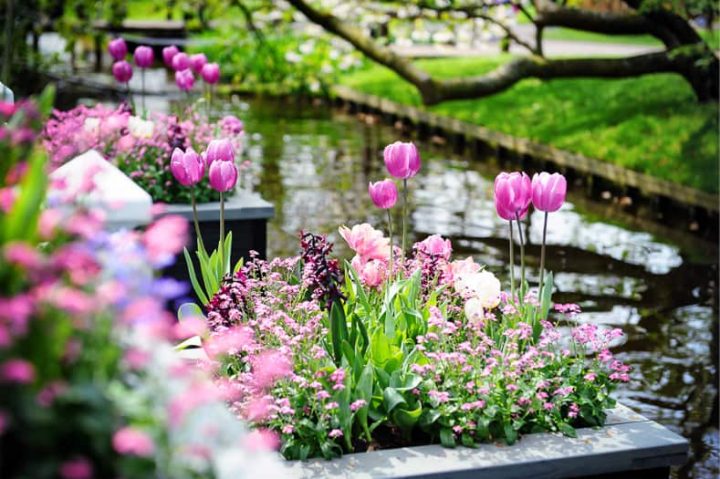
When you are putting together the plan for your garden, color is one of the first things to decide on. Just like when you are decorating a room, the color scheme will set the tone for the space.
For a cohesive look, I usually try to stick with a maximum of 3 colors in a single garden bed or area. However, feel free to use more if you prefer a wilder feel, or less if you are looking for a serene monochromatic feeling.
Find more information on creating a garden color scheme HERE.
2 | Vary Sizes, Shapes and Textures
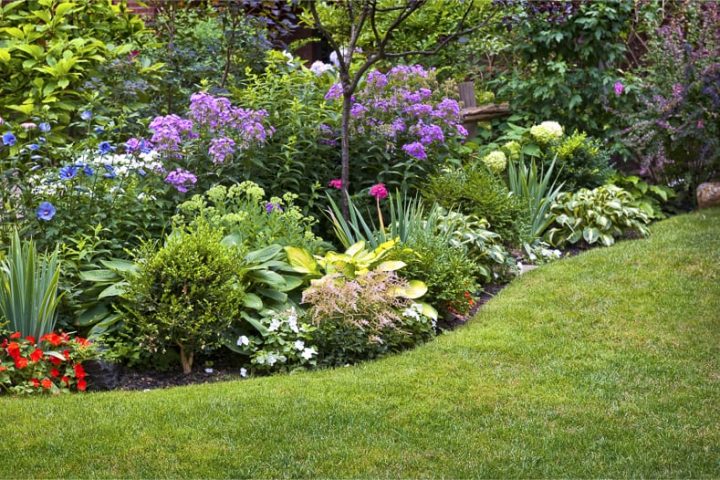
The next step to choosing the right plants for landscaping is to vary the sizes, shapes and textures of the plants in an area.
Tall, thinner plants add interest between shorter, more rounded bushes.
Plants with thinner leaves (like grasses) look good with plants that have broader leaves.
Learn more about plant combinations HERE.
3 | Consider All Seasons
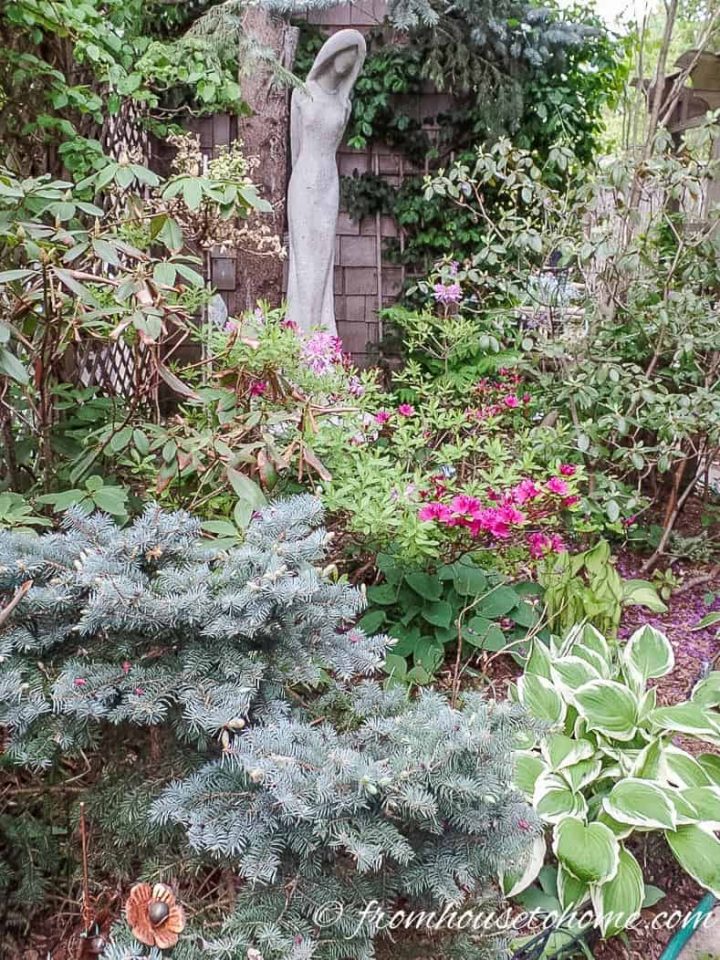
Remember that even though your garden may not be flowering all year round, you can still see it all year round.
Look at the bloom time of your plants and select different varieties so you have flowers all season.
Also make sure to select some plants that will add winter interest.
This can be evergreen plants that keep their leaves.
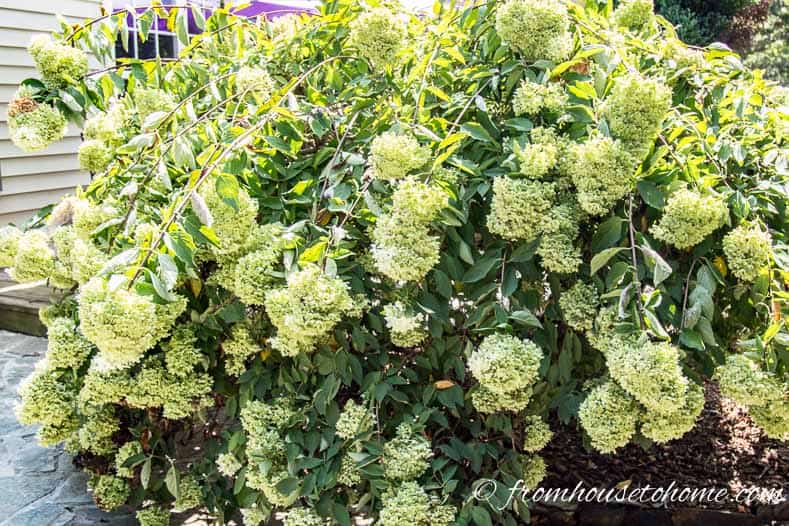
Plants with interesting seed heads or dried flower heads like this hydrangea also add winter interest.
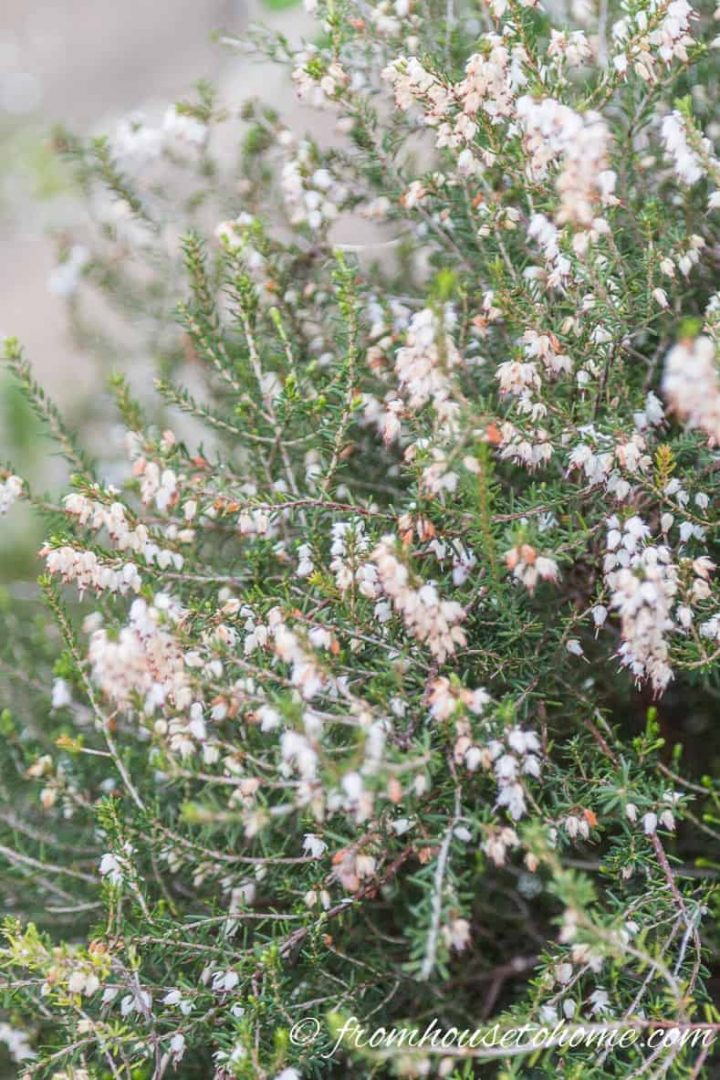
Or even plants that bloom in the winter, like this heather.
4 | Where Is The Sun?
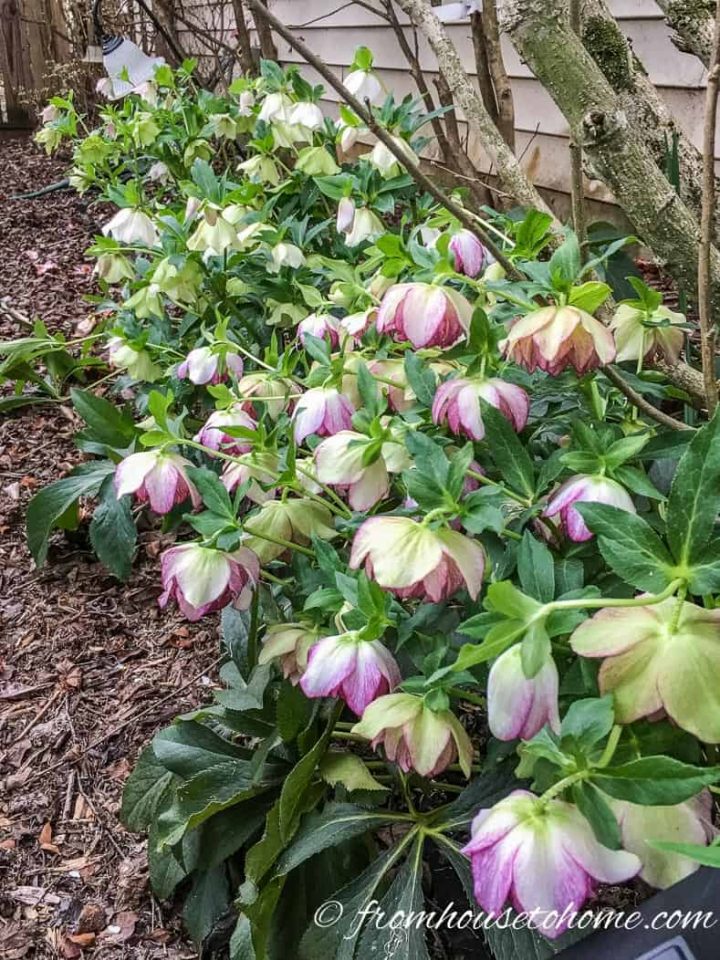
To choose plants that will grow well in your garden, you will need to take note of which areas of your garden get the most sun and which get the least.
Make sure to use plants that need the amount of light provided. These hellebores get barely any sun at all, yet they are happy and healthy…because they really like the shade.
Remember that shade plants require less than 4 hours of sunlight per day, part shade plants need between 4 and 6 hours of sun a day, and full sun plants need more than 6 hours.
5 | Check The Hardiness Zone
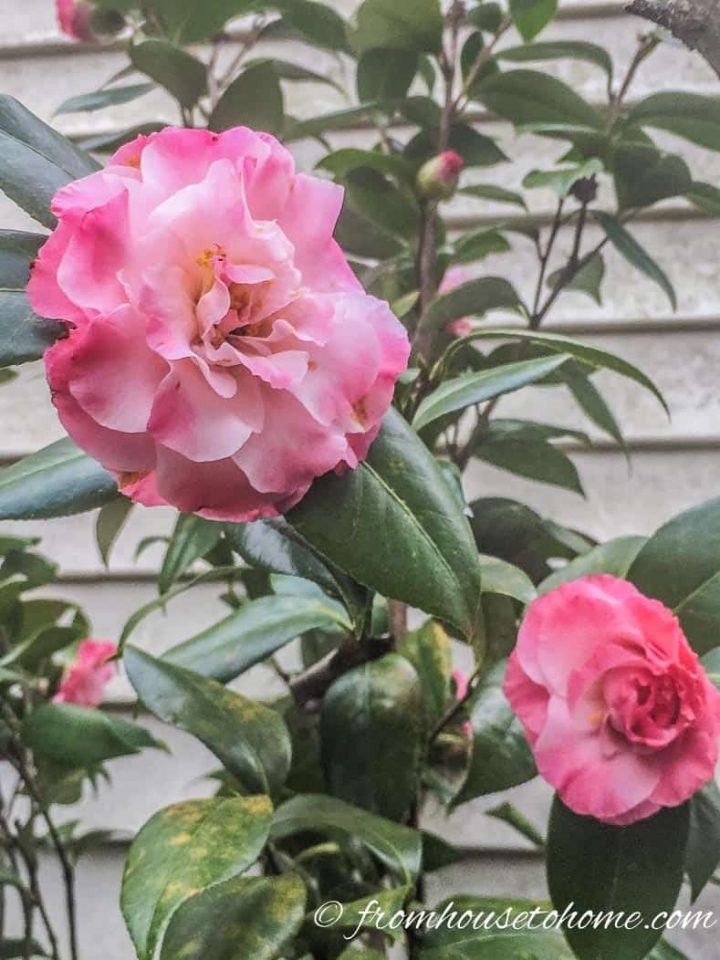
This is one of the most important steps for choosing plants for landscaping your garden: Make sure that the plants you buy are meant to grow in the gardening zone where you live.
Camellias (like the ones above) won't survive in cold climates.
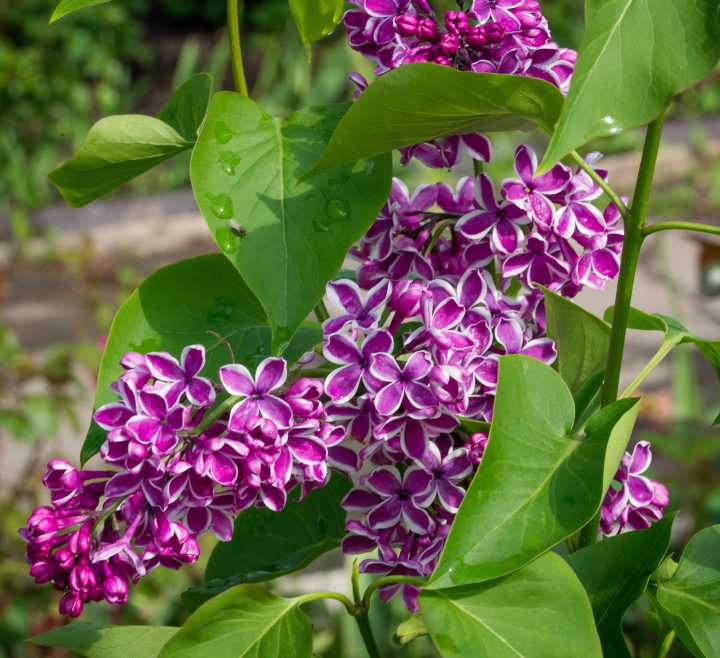
Whereas lilacs don't like the heat.
If you're not sure which zone you live in, check a zone map like this one to find out.
6 | Consider the Mature Size
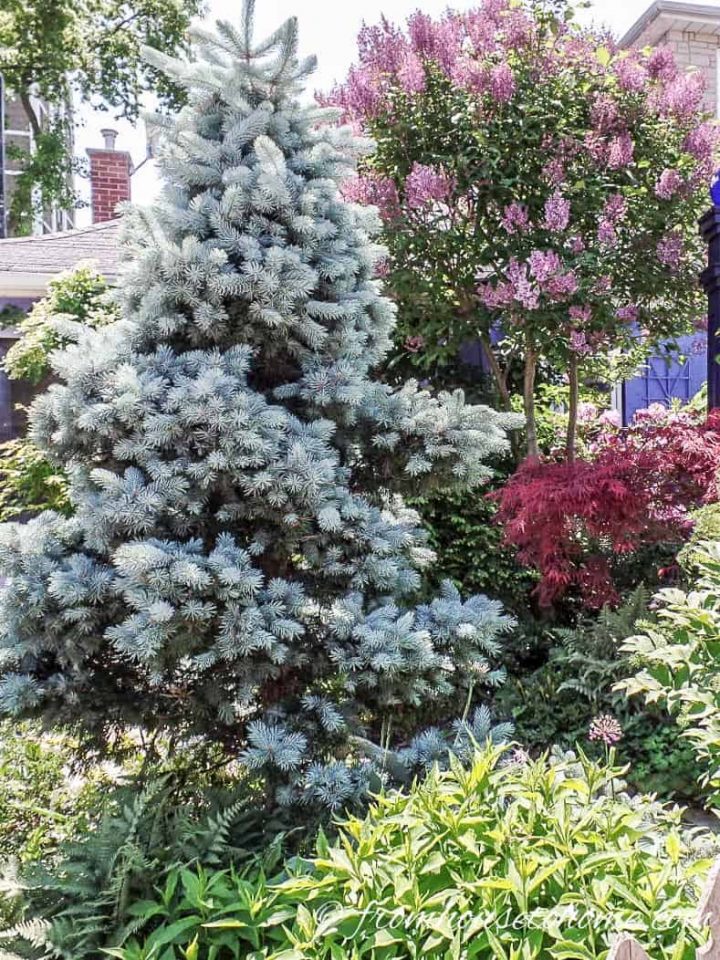
Getting plants that are too big for the space you have is a very common problem. Even experienced gardeners do this sometimes!
It is really easy to look at the current size of the plant in the pot and plan accordingly. However most plants will get MUCH bigger once they are in the ground.
Make sure you know how big they will be once they are full grown. Try not to crowd them too much (unless you are prepared to do the extra work of moving plants around later).
7 | Test Your Soil

Another important tip when choosing plants for landscaping is to know your soil type.
While most plants grow best in neutral soil, there are some that thrive in acidic soils (like the Azaleas and Rhododendrons) and others that really prefer alkaline soils (like Clematis).
Still others (like some varieties of Hydrangeas) will change the color of their bloom depending on the acidity of your soil.

You can amend your soil to produce the right conditions for these kinds of plants, but you need to know where you starting from to know what needs to change.
A simple garden pH test* will let you know where your current soil stands…and you can go from there.
8 | How Much Maintenance Are You Willing To Do?
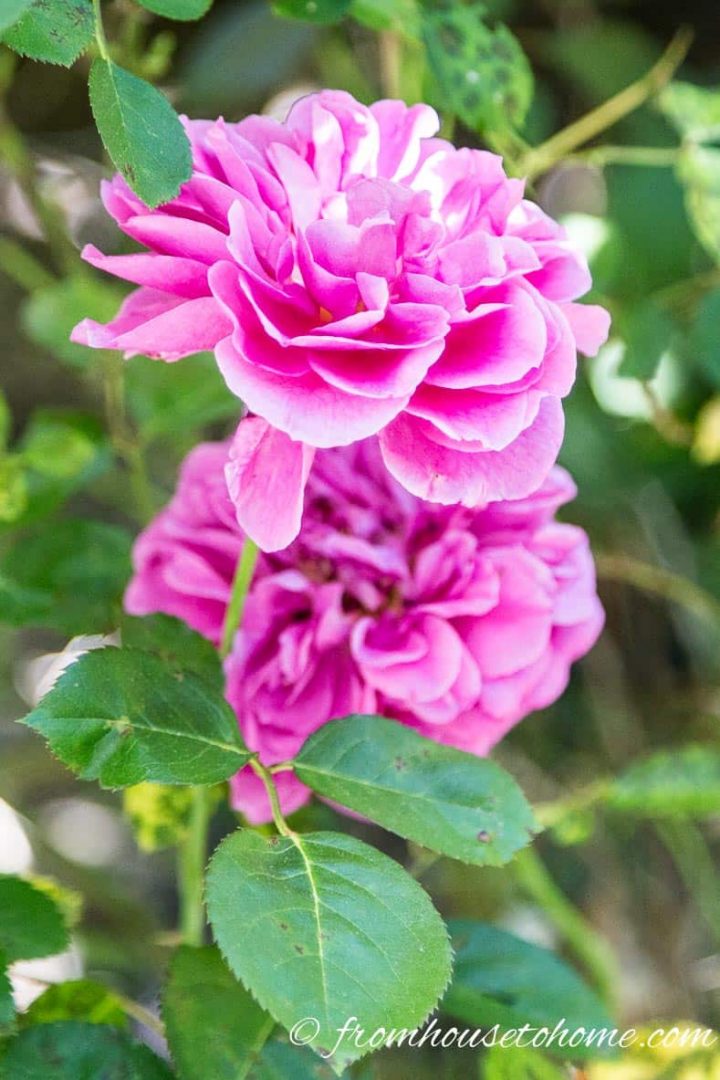
Different kinds of plants require different kinds of maintenance.
Some types of plants (like most roses) will need to be pruned regularly to keep them healthy.
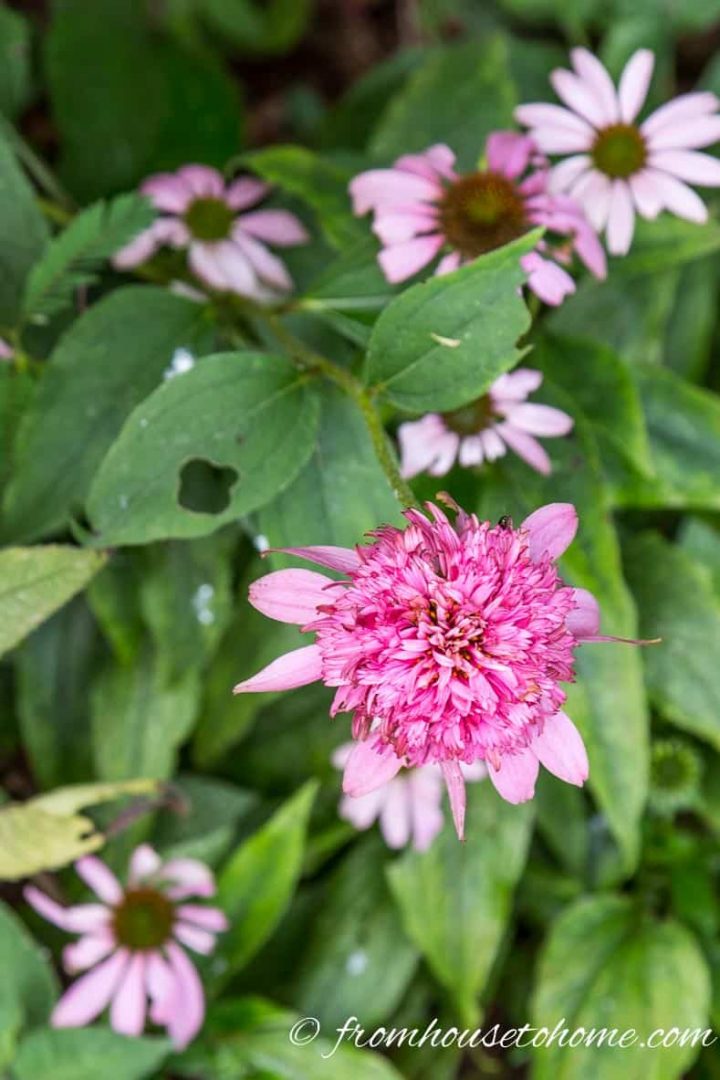
Others (like Echinacea) will self-seed, and you may need to pull out plants that show up where you don't want them.
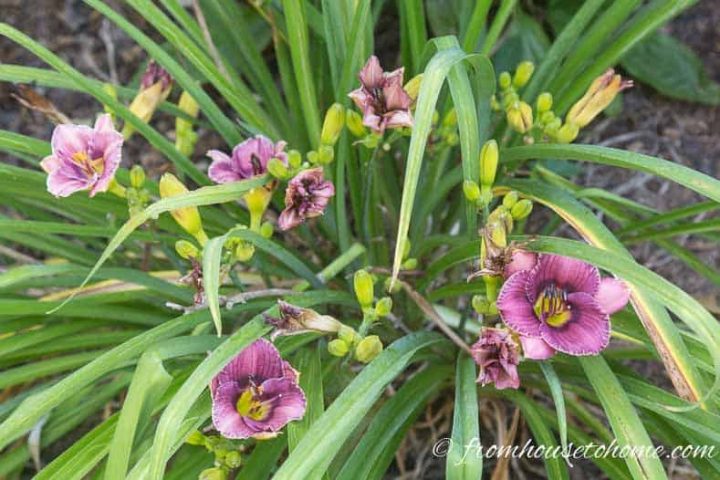
Still others (like day lilies) need to be divided every few years to keep them blooming.
If you are trying to minimize the amount of work to be done in the yard, make sure to do a little research on the plants you are planning to buy to see what their maintenance requirements are.
9 | How Much Moisture Is There?

Just like the sun, the level of moisture required differs between plants.
While you can water a garden to add moisture where it is lacking, the opposite is not true. If you have soggy spots (like under the down spout), a lot of plants will not be happy there because the soil is too wet. In those areas, be sure to choose your plants carefully so they will be happy, like this Louisiana Iris.
Other plants (such as Rhododendrons) have very shallow root structures and will dry out very quickly in hot weather.
To limit the amount of extra watering required, try to choose plants whose moisture needs fit the spot you are filling.
10 | Avoid Invasive Plants
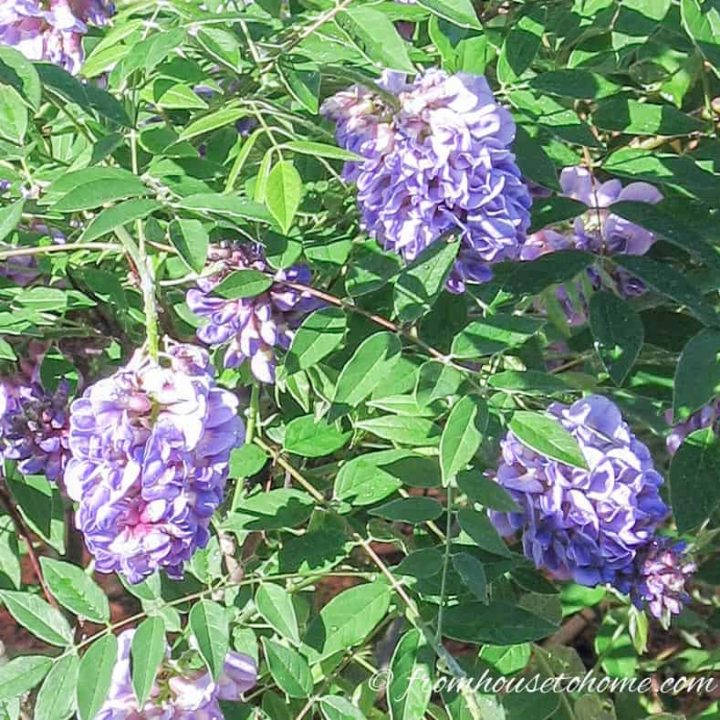
Another plant selection tip is to choose non-invasive varieties. I have learned this lesson the hard way!
There are many plants sold by nurseries that are very aggressive.
These plants often cause problems with the environment. And at the least, they are very difficult to maintain because they take over the garden and the other plants growing there (often killing them).
To avoid these issues, it's much easier not to grow invasive plants to begin with.
11 | Buy Perennial Plants, Bushes and Trees
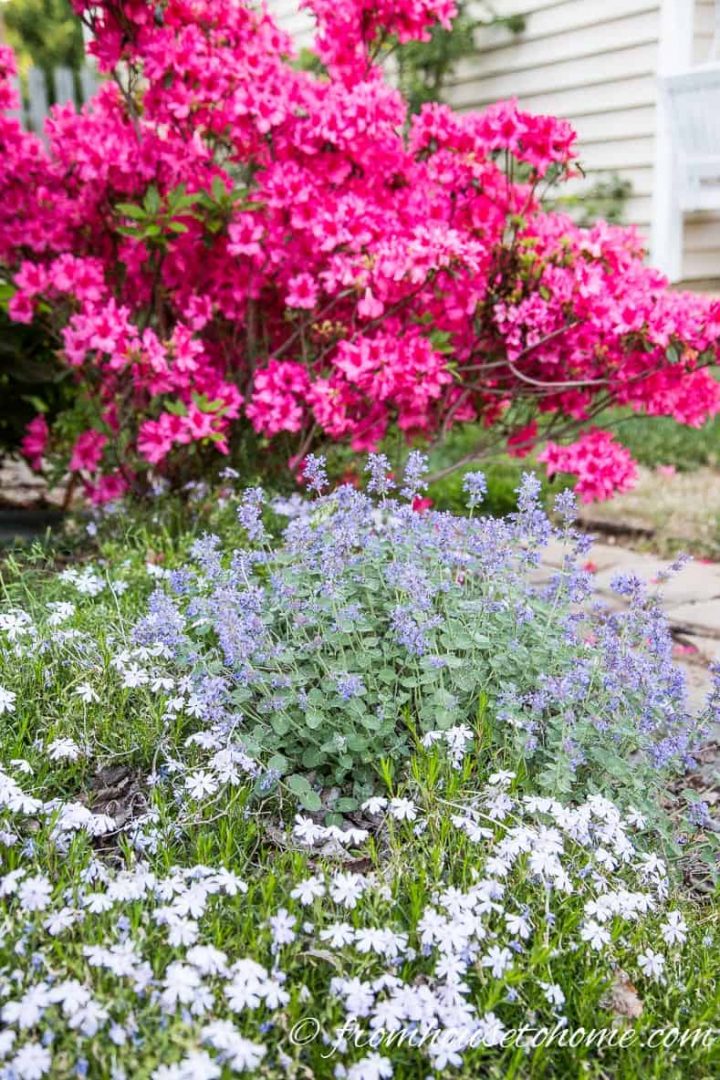
The last tip when picking the best plants for your garden is to buy perennial flowers, shrubs and trees.
These are all plants that will grow year after year which means you only have to plant them once…unlike annuals which you will have to buy and re-plant every year.
So not only will perennials be less work, they will also save you money in the long run.
Keeping all of these plant selection tips in mind will help you make better plant choices for landscaping your garden and keep it as low maintenance as possible.
Other Gardening Ideas You Might Like
- 10 Landscaping Mistakes To Avoid
- How To Create A Secret Garden In Your Backyard
- 10 Secrets to Successful Landscape Design
Have comments or questions on how to choose plants for landscaping your garden? Tell us in the section below.
Pin It So You Don't Forget It!
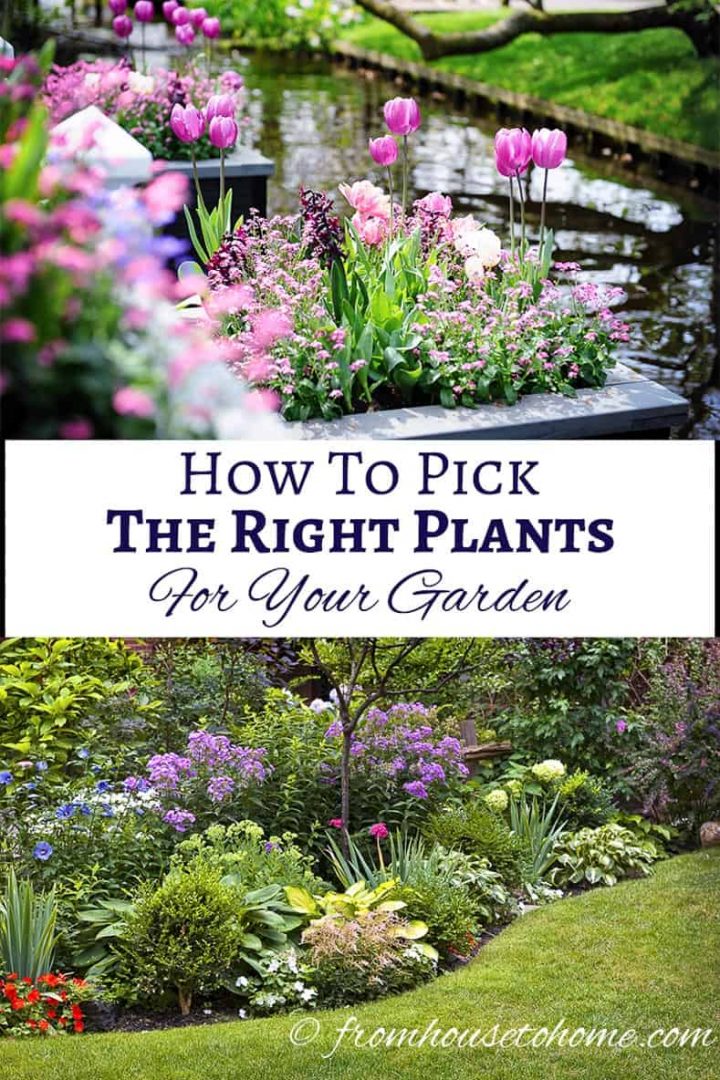
This post was originally published on March 10, 2017 but was updated with new content on November 23, 2024.




























What plants would you recommend for the front of walls? I have retaining walls one each side of my house in the front yard separated by the front stairs and another set that runs parallel with my driveway which is located on the side of my house which would be North. The first set brings you from the street to the grass of the front yard then there is grass until you get to the front Left (North side) corner of the house which there is another set that brings you to the back yard with a pathway to the back porch stairs. The front yard on both sides is small and I’m considering getting rid of the grass and places plants, mulch along with adding pavers, or stepping stones to lead to the second set and to the landing of front steps before you continue to the wooden porch stairs. A picture would be much easier to describe. The South side gets a lot of sun and the North gets morning sun and some areas afternoon shade due to the house shadow. I live in zone 6, Boston MA. I have two large rhododendrons in the middle of the porch on each side and hydrangeas but I need to add something taller nearer to the porch due to the height of the porch. It’s about 6.5 ft to the from the ground to the floor of the porch with lattice. The porch goes almost the entire length of the house on each side, about 1-2 feet on each side from the house corners. I would like something that is low at the walls and would trail over the front walls and mix it up with other Perennials. Any advice would be greatly appreciated. I have a lot of rock walls and am looking for the right plants to place in the front yard.
Hi Michelle…I think replacing the grass with plants, mulch & stepping stones is a great idea (I did that when I lived in the city with a small front yard and loved it). For the front of the porch, I would try some of the cold hardy Camellias. They like the same growing conditions as Rhododendrons and are also evergreen, but get a little taller. You can also limb them up if you want something smaller like hydrangeas to grow under them. Mountain Laurel would be another similar option. I would also mix in some standard evergreens (like Junipers or miniature blue spruce) to give a different texture. For growing over walls, I love creeping Phlox (Phlox subulata). It looks so pretty in the spring and is easy to care for. I like to grow Iris reticulata with it for an extra punch of color. Creeping sedums and creeping thyme are other good stone wall plants. For the rest of the garden, you have a lot of choices. I would pick the colors you want and then find plants you like that go with your color scheme. Buying at least 3 plants of each type will help the garden to look cohesive, and including a few small shrubs will give it some structure even in the winter. Hope that helps!
My mom has been thinking about taking better care of her garden next summer by getting some different plants. She would really like to get some that are healthy and will grow in her area. Making sure that she can get them from a professional could be really useful. I liked what you said about how short round bushes can have tinner plants that are tall in between them to add interest.
It really helped when you talked about landscaping and how to add shapes and textures to a project. Recently, my wife and I moved into another home, and it came with great yard space. We’re excited to have the best garden in our neighborhood, so we’ll be sure to follow your tips! Thanks for the information on plants and how to mix them to create an awesome garden.